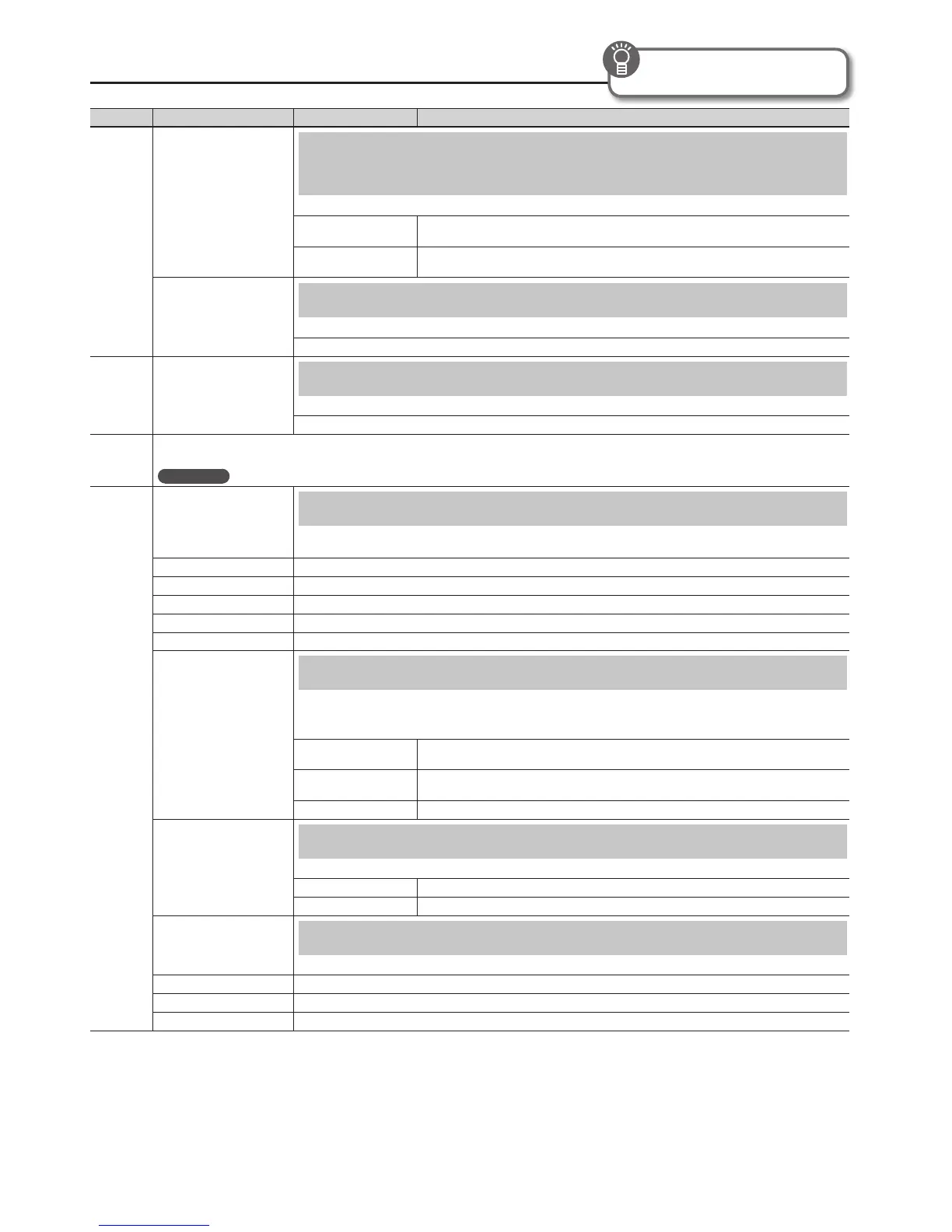Detailed Settings for All Functions (Menu)
48
Category Parameter Value Explanation
Rhythm
Auto Std Tempo
Preventing the Rhythm Pattern Tempo from Changing
Automatically (Auto Std Tempo)
This lets you prevent the tempo setting from changing automatically when you switch rhythm patterns.
OFF
When the rhythm pattern is stopped, the tempo settings are not changed automatically when the
rhythm patterns are changed.
ON
Switching the rhythm pattern while the rhythm pattern is stopped automatically changes the
tempo settings to those in the new rhythm pattern.
Playback Transpose
Transposing the Song Playback (Playback Transpose)
This lets you play back an SMF format song at a dierent pitch.
-6–0–5 (semitone steps)
Rhythm Audio Rec Gain
Adjusting the Audio Recording Volume (Audio Rec Gain)
This adjusts the volume for audio recording.
-24–6 dB
Wireless
You can easily use wireless applications with the VR-09. To enable wireless use, just connect the WNA1100-RL wireless USB adapter (sold separately) to the USB
MEMORY port.
REFERENCE
For details, refer to “About the Wireless LAN Function” (p. 52).
MIDI
Selecting the MIDI Transmit Channel (TxMIDI Channel)
You can use the VR-09’s MIDI OUT connector to send performance data to an external device. Here you can specify the MIDI
channel on which the musical data that you play on each part will be transmitted.
TxMIDI Channel Upper
1–16
TxMIDI Channel Lower 1–16
TxMIDI Channel Pedal 1–16
TxMIDI Channel Drum
1–16
TxMIDI Channel Control
1–16
MIDI IN Mode
Specifying the MIDI IN Mode (MIDI IN Mode)
The VR-09 contains two sound generators: one for SMF playback and another for the keyboard.
Normally, data received via the MIDI IN connector will control only the SMF playback sound generator (GM2 sound generator),
but you can change the MIDI IN Mode so that incoming data will control the keyboard sound generator as well.
MODE 1
The sound generator will be controlled as the SMF playback sound generator (GM2 sound
generator).
MODE 2
Channels 5 through 10 and channels 12, 14, and 15 will be sent to the SMF playback sound genera-
tor (GM2 sound generator); the other channels will be sent to the keyboard sound generator.
KEYBOARD You can connect another MIDI keyboard (sold separately) and perform using both keyboards (p. 51).
Send PC Switch
Enabling PC Number Transmission (Send PC Switch)
You can turn PC (program change) number transmission on/o.
OFF PC numbers will not be transmitted.
ON PC numbers will be transmitted.
Specifying PC Numbers (PC Number)
You can specify the program change numbers that are transmitted from the MIDI OUT connector when you select a registration.
PC Number BankMSB 0–127
PC Number BankLSB 0–127
PC Number PC Num 1–128
For details about how to make menu
settings, see p. 42.

